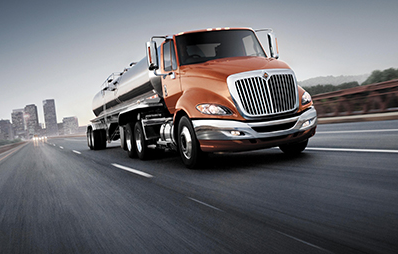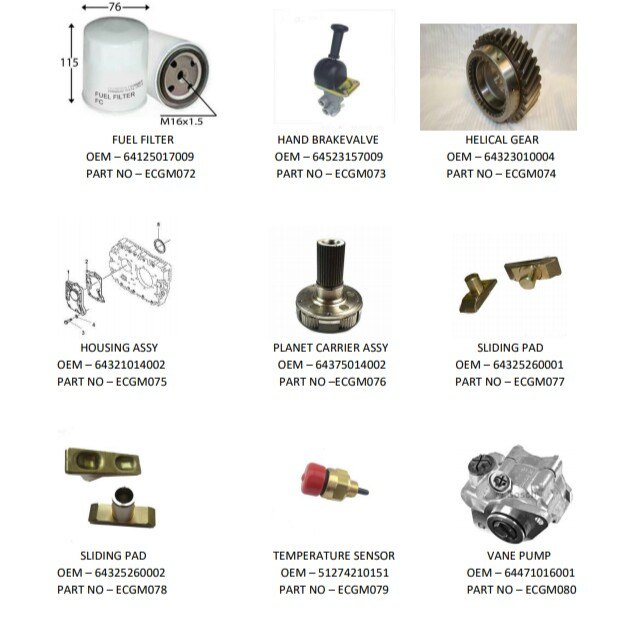Camper Shell Fitment Guide
Camper Shell Fitment Guide cars.truckstrend.com
For truck owners, a camper shell, often referred to as a truck cap or topper, transforms an open bed into a secure, weather-protected, and versatile enclosed space. Whether you’re looking for extra storage, a cozy camping haven, enhanced security for tools, or simply a way to keep your cargo dry, a camper shell is an invaluable addition. However, the true utility and longevity of a camper shell hinge entirely on one critical factor: proper fitment.
A perfectly fitted camper shell not only looks aesthetically pleasing, seamlessly integrating with your truck’s lines, but also functions optimally. It ensures watertight sealing, prevents rattling, maintains structural integrity, and contributes to the overall safety and performance of your vehicle. Conversely, a poorly fitted shell can lead to water leaks, wind noise, damage to your truck’s bed rails, compromised security, and even dangerous shifting of the load during transit. This comprehensive guide will walk you through everything you need to know about achieving the ideal camper shell fitment, ensuring your investment serves you well for years to come.
Camper Shell Fitment Guide
Understanding Your Truck’s Specifications: The Foundation of Fitment
Before you even begin to browse camper shell options, the most crucial step is to intimately understand the precise specifications of your truck’s bed. Camper shells are not universal; they are meticulously designed to fit specific truck makes, models, and bed configurations. Overlooking these details is the most common mistake leading to fitment issues.
Here are the key truck specifications you absolutely must know:
- Make, Model, and Year: This is the absolute starting point. For example, a "2020 Ford F-150" or a "2015 Toyota Tacoma." Even within the same model year, subtle design changes can occur, so being precise is vital.
- Bed Length: Truck beds come in various standard lengths:
- Short Bed: Typically around 5.5 to 5.8 feet (e.g., Ford F-150 SuperCrew, Chevy Silverado Crew Cab).
- Standard Bed: Usually around 6.5 feet (e.g., Ford F-150 SuperCab, Ram 1500 Quad Cab).
- Long Bed: Often 8 feet (common on regular cab or commercial trucks).
- Why it matters: A shell designed for a 6.5-foot bed will simply not fit an 8-foot bed, and vice versa. Even a few inches off can make a shell unusable.

- Cab Style: While the shell sits on the bed, the cab style (Regular Cab, Extended Cab/Quad Cab, Crew Cab/Double Cab) influences the overall aesthetic and sometimes the specific model variant of the shell. Cab-high shells are designed to align with the height of your truck’s specific cab.
- Bed Width: Although less variable than length within a given model, subtle differences in bed width between manufacturers (e.g., Ford vs. Chevy vs. Ram) mean shells are specifically molded for these dimensions. The shell must sit flush across the entire width of your bed rails.
- Tailgate Design: Modern tailgates can have unique contours, integrated steps, or power-assisted features. Camper shells are often designed to sit flush with the top edge of the tailgate when closed, creating a seamless seal.
- Bed Rail Design and Features:
- Capped vs. Uncapped Rails: Some trucks have plastic or metal caps on their bed rails; others are painted steel. This affects how clamps grip.
- Integrated Tie-Downs/Track Systems: Systems like Toyota’s Deck Rail System or Nissan’s Utili-track can sometimes interfere with clamp placement or require specific mounting hardware.
- Aftermarket Bed Liners: Drop-in bed liners can sometimes raise the bed floor or alter the rail profile, potentially affecting the shell’s seating and sealing. Spray-in liners typically don’t cause issues.
Practical Advice: Consult your truck’s owner’s manual for precise dimensions, or use a tape measure to confirm your bed length from the bulkhead (front of the bed) to the inside edge of the tailgate.
Types of Camper Shells and Their Fitment Considerations
Camper shells come in various designs and materials, each with unique fitment implications. Understanding these differences will help you choose a shell that not only fits your truck but also suits your needs.
-
Cab-High/Cab-Level Shells:
- Description: The most common type, designed to match the height of your truck’s cab.
- Fitment: Offers the most integrated look, maintaining good aerodynamics and fuel efficiency. Requires precise measurement to ensure the shell’s roofline aligns perfectly with the cab.
- Materials: Typically fiberglass or aluminum.
-
Mid-Rise Shells:
- Description: Slightly taller than the cab, providing extra headroom and cargo volume.
- Fitment: Still relatively aerodynamic but offers more utility. The increased height needs to be considered for garage clearance and overall vehicle height.
-
High-Rise/Wedge/Commercial Shells:
- Description: Significantly taller than the cab, often with a sloped or "wedge" design, maximizing interior volume. Commercial shells often have side access doors.
- Fitment: Primarily for maximum cargo capacity or specialized work. Aerodynamics are less of a priority, and fuel economy will be more impacted. The sheer height demands careful consideration for overhead clearances.
-
Pop-Up/Wedge Camper Shells:
- Description: Specialized shells designed for camping, featuring a pop-up roof that extends for standing room.
- Fitment: These are more akin to dedicated truck campers and often require more robust mounting systems and can significantly impact the truck’s center of gravity and suspension. Their fitment is highly specialized.
-
Material Considerations:
- Fiberglass: Most popular, offers a smooth, paint-matched finish, good insulation, and customizability. Heavier than aluminum.
- Aluminum: Lighter, more durable for heavy use, often seen on commercial or utility shells. Less aesthetic appeal for some.
- ABS Plastic: Lighter than fiberglass, often more affordable, but less rigid.
Beyond the basic dimensions, features like roof rack mounting points, window configurations, and even interior lighting options can influence the specific model of shell that fits your truck and lifestyle.
The Measurement Process: Precision is Key
Even with your truck’s official specifications, taking your own precise measurements is absolutely crucial, especially when buying a used shell or confirming a new one.
Tools Needed:
- A long, sturdy tape measure (a steel construction tape is ideal).
- A level.
- A helper (highly recommended for accuracy).
- A notepad and pen.
Step-by-Step Measurement Guide:
- Prepare Your Truck: Ensure your truck bed is empty and clean. If you have a drop-in bed liner, it’s best to remove it temporarily for the most accurate measurements, as they can sometimes alter the rail profile.
- Bed Length (Bulkhead to Tailgate):
- Measure from the inside top edge of the bulkhead (the wall at the front of your truck bed, closest to the cab) straight back to the inside top edge of your closed tailgate.
- Measure in at least two or three spots (left, right, and center) to ensure consistency. Note down the shortest measurement if there’s any discrepancy.
- Bed Width (Inside Rail to Inside Rail):
- Measure the inside width of your bed rails at three points: near the bulkhead, in the middle of the bed, and near the tailgate.
- This ensures the shell will sit flush across the entire length of the rails.
- Bed Rail Height (from Bed Floor):
- Measure from the bed floor (or top of a spray-in liner) up to the top edge of your bed rails. This helps determine the interior height clearance of the shell.
- Cab Height (for Cab-High Shells):
- For a cab-high shell, measure from the top of your bed rails straight up to the highest point of your truck’s cab (usually the highest point of the roof or roof rack if applicable). This ensures the shell will align aesthetically.
- Check for Levelness:
- Place a long level across your bed rails, both lengthwise and widthwise, to ensure they are perfectly level. Any significant dips or humps could cause sealing issues.
Tips for Accuracy:
- Measure Thrice: Always measure each dimension at least three times to confirm accuracy.
- Record Everything: Write down all your measurements clearly, noting the unit (inches or centimeters).
- Consider Aftermarket Add-ons: If you have any aftermarket accessories on your bed rails (e.g., stake pocket covers, rail caps), factor these into your measurements or consider removing them.
Installation Techniques and Securement for Optimal Fit
Once you have the correct shell for your truck, proper installation is paramount to achieving a truly excellent fit. While professional installation is always recommended for first-timers, understanding the process is beneficial.
- Preparation is Key:
- Clean Bed Rails: Thoroughly clean the top surfaces of your truck’s bed rails. Any dirt, debris, or old adhesive can compromise the seal.
- Apply Weather Seal: Most camper shells come with a bulb seal or foam tape that needs to be applied along the bottom edge of the shell where it meets the truck’s bed rails. This is critical for preventing water and dust intrusion. Ensure it’s applied smoothly and continuously.
- Positioning the Shell:
- With the help of a few people (shells are heavy and awkward), carefully lift the shell and gently lower it onto your truck bed.
- Alignment: Slowly slide the shell into its final position. It should be centered on the bed, with the front edge flush against the bulkhead and the side edges sitting evenly on the bed rails. The rear of the shell should ideally sit flush with the top of your closed tailgate.
- Securement: Clamping Systems:
- Most modern camper shells use non-invasive clamping systems that do not require drilling into your truck’s bed rails.
- J-Clamps or C-Clamps: These are the most common. They hook under the lip of the bed rail and tighten down onto the shell’s frame.
- Quantity: The number of clamps varies, but typically 4-8 clamps are used, evenly spaced along both sides of the bed.
- Tightening: Tighten the clamps incrementally, alternating sides to ensure even pressure and prevent warping the shell or bed rails. Do not overtighten, as this can damage the shell or the truck bed. Hand-tight is usually sufficient, followed by a quarter to half turn with a wrench.
- Electrical Connections:
- Third Brake Light: Most shells have a third brake light that needs to be wired into your truck’s existing brake light circuit for safety and legality.
- Interior Lights/Power Outlets: If your shell has these features, they will also need to be wired, usually to a constant 12V power source.
- Sealing: Ensure all wiring entry points are sealed with silicone or rubber grommets to prevent water leaks.
- Final Checks:
- Water Test: After installation, run water over the shell with a hose, paying close attention to the seals around the bed rails, windows, and rear door, to check for any leaks. Address any leaks immediately with additional sealing.
- Road Test: Drive the truck to listen for rattles, excessive wind noise, or any signs of instability. Re-tighten clamps after the first 50-100 miles, as the seals can compress.
Important Considerations Beyond Basic Fitment
Achieving a perfect fit goes beyond just dimensions; it involves understanding the broader implications of adding a camper shell to your truck.
- Weight and Payload Capacity: Camper shells can weigh anywhere from 100 lbs (aluminum) to over 300 lbs (heavy-duty fiberglass). Always ensure that the combined weight of the shell and your typical cargo does not exceed your truck’s Gross Vehicle Weight Rating (GVWR) or payload capacity. Overloading can compromise safety, handling, and accelerate wear on suspension components.
- Suspension Impact: A heavy shell, especially when combined with a loaded bed, can cause your truck’s rear end to sag. This affects ride quality, headlight aim, and tire wear. Consider adding helper springs, air bags, or heavier-duty shocks to maintain proper suspension geometry and handling.
- Aerodynamics and Fuel Economy: While a cab-high shell can sometimes slightly improve aerodynamics by smoothing airflow over the bed, a taller shell will generally increase drag and lead to a noticeable decrease in fuel economy.
- Visibility: A shell, especially one with tinted windows or limited side visibility, can create blind spots. Ensure your mirrors are properly adjusted, and consider adding a backup camera if your truck doesn’t have one.
- Security: A well-fitted shell provides excellent security. Ensure the rear door has a robust locking mechanism. Some shells offer additional security features like reinforced glass or internal locking rods.
- Maintenance: Regularly inspect your camper shell’s seals for cracks or deterioration, especially after extreme weather. Check the tightness of the clamps periodically (every few months or after heavy off-roading) to ensure the shell remains securely attached.
- Resale Value: A well-maintained, properly fitted camper shell can add significant value and appeal to your truck if you decide to sell it. Conversely, a damaged or ill-fitting shell can detract from its value.
Camper Shell Fitment and Cost Guide
The "price of fitment" itself is not a standalone cost but is intrinsically linked to the price of the camper shell and any associated installation services or modifications. Here’s a general guide to help you understand the cost landscape related to camper shell fitment:
| Category | Description | Estimated Price Range (USD) | Fitment Relevance |
|---|---|---|---|
| New Camper Shells | |||
| Aluminum (Basic) | Entry-level, durable, lightweight, often for work trucks. | $1,500 – $2,500 | Custom sizing for make/model, less aesthetic focus. |
| Fiberglass (Cab-High) | Most popular, color-matched, sleek appearance, good insulation. | $2,000 – $4,000 | Precision molding for exact bed contours and cab height match. |
| Fiberglass (Mid-Rise/High) | Increased cargo volume, more utility, less aerodynamic than cab-high. | $2,500 – $5,000+ | Requires careful measurement of vertical clearance and bed length. |
| Specialty/Commercial | Heavy-duty, side access, interior shelving, specific work features. | $3,000 – $8,000+ | Designed for specific work truck configurations; robust mounting needed. |
| Used Camper Shells | Price highly dependent on condition, age, and fitment. | $300 – $1,500 | Critical: Requires meticulous measurement to ensure it fits YOUR truck exactly. |
| Fitment Related Services | |||
| Professional Installation | Ensuring proper sealing, clamping, electrical wiring, and alignment. | $100 – $300 | Guarantees correct and secure fitment, reduces leak risk. |
| Bed Liner Removal/Trim | If a drop-in liner interferes with fitment or clamping. | $50 – $150 | Ensures the shell sits flush and seals properly on the bed rails. |
| Custom Wiring | For complex electrical setups (e.g., multiple interior lights, power outlets). | $50 – $200 | Ensures all features work correctly and safely without leaks. |
| Fitment Enhancements | |||
| Weather Sealing Kit | Replacement bulb seal, foam tape, silicone. | $20 – $50 | Essential for preventing water and dust leaks. |
| Heavy-Duty Clamps | Upgraded clamps for additional security or specific bed rail designs. | $50 – $100 | Ensures the shell remains securely attached, especially for heavy use. |
| Suspension Upgrades | Helper springs, airbags, heavier-duty shocks to compensate for shell weight. | $200 – $1,000+ | Maintains truck’s level stance, handling, and prevents excessive sag due to weight. |
Note: Prices are estimates and can vary significantly based on brand, features, region, and dealer.
Frequently Asked Questions (FAQ)
Q1: Are camper shells universal?
A1: No, absolutely not. Camper shells are designed to fit specific truck makes, models, and bed lengths. A shell from a Ford F-150 will not fit a Toyota Tacoma, nor will a short bed shell fit a long bed of the same model.
Q2: How do I know if a used camper shell will fit my truck?
A2: You must take precise measurements of your truck bed (length, width, cab height) and compare them to the exact dimensions of the used shell. Also, confirm the make and model the used shell was originally designed for. It’s often safer to buy new or specifically designed used shells.
Q3: Do I need to drill holes in my truck to install a camper shell?
A3: Most modern camper shells use non-invasive clamping systems that secure the shell to the bed rails without drilling. However, some older models or commercial-grade shells might require drilling for more permanent attachment.
Q4: How much does a camper shell typically weigh?
A4: The weight varies significantly by material and size:
- Aluminum shells: 100-150 lbs
- Fiberglass shells: 150-300 lbs (or more for high-rise/heavy-duty models)
Always consider this weight against your truck’s payload capacity.
Q5: Will a camper shell affect my gas mileage?
A5: Yes, generally. A cab-high shell might have a minimal effect or even a slight improvement in some cases by smoothing airflow. However, mid-rise and especially high-rise shells will increase aerodynamic drag, leading to a noticeable decrease in fuel economy (typically 1-3 MPG, but can be more).
Q6: What’s the difference between a truck cap, topper, and camper shell?
A6: These terms are largely synonymous and are used interchangeably to describe the same product: an enclosure that covers the bed of a pickup truck.
Q7: Can I install a camper shell by myself?
A7: While it’s possible, it’s strongly recommended to have at least two to three people assist you due to the size, weight, and awkwardness of a camper shell. Professional installation ensures proper sealing, alignment, and secure clamping.
Conclusion
The camper shell is a transformative accessory for any pickup truck, unlocking a new level of utility, security, and versatility. However, the benefits are fully realized only when the shell is properly fitted. From meticulously understanding your truck’s specifications and carefully measuring your bed, to selecting the right type of shell and executing a precise installation, every step in the fitment process is crucial.
By investing time in research, taking accurate measurements, and ensuring a professional or carefully executed installation, you guarantee that your camper shell will be a secure, watertight, and aesthetically pleasing extension of your truck. A well-fitted camper shell is not just an attachment; it’s an integration that enhances your truck’s capabilities and protects your investment for countless adventures and tasks to come.




